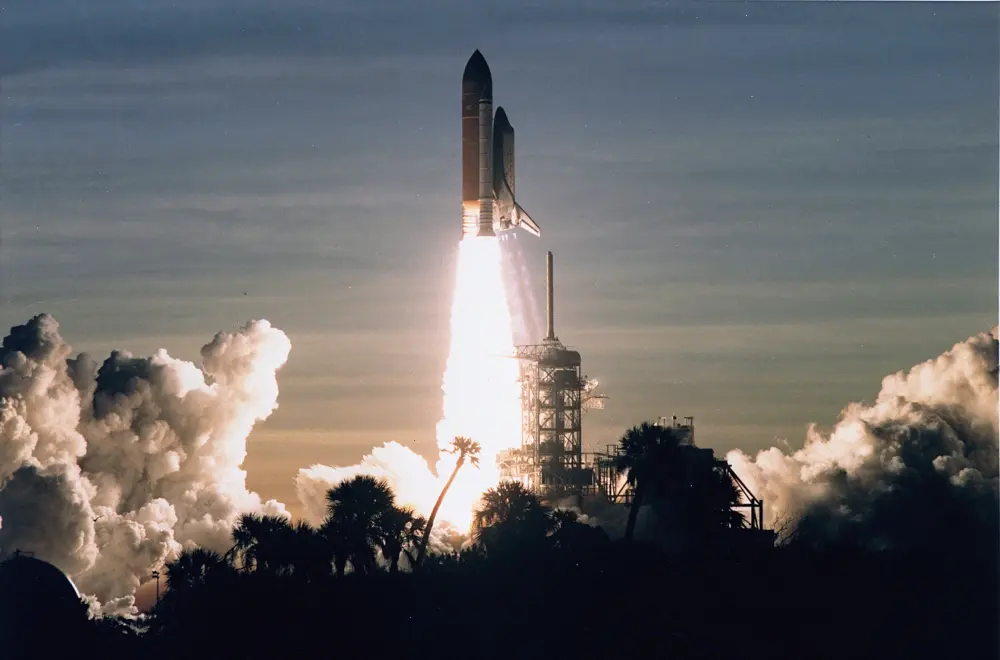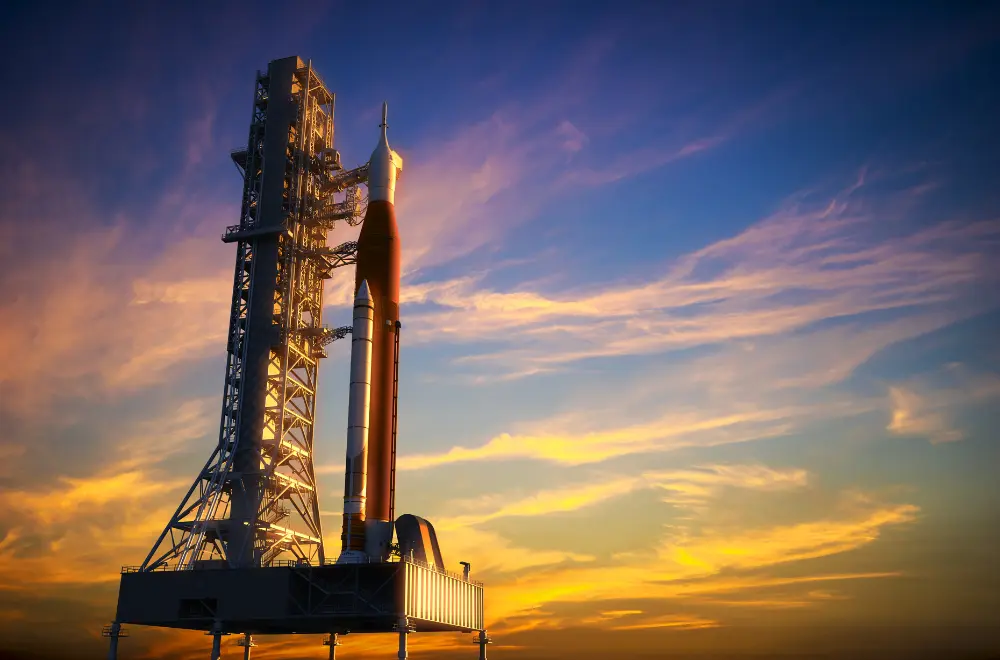In an era when space exploration has transcended national boundaries, India has carved its unique trajectory through the cosmos. India’s space agency, the Indian Space Research Organisation (ISRO), is making waves with its Gaganyaan launch mission—a project that aims to send Indian astronauts into space, marking a significant leap in the nation’s space exploration journey.
The Gaganyaan spacecraft, named after the Sanskrit word for “craft or vehicle to the sky,” represents India’s ambitions to become the fourth country in the world capable of sending humans into space. The journey toward this extraordinary feat is underpinned by meticulous planning, rigorous testing, and unwavering commitment.
Launching the Dream: The Gaganyaan Launch Mission
On a bright day at 10:00 local time (04:30 GMT) from the Sriharikota launch site, the Gaganyaan spacecraft embarked on its inaugural test flight. This event marked the first in a series of crucial trials, setting the stage for the mission to send Indian astronauts into space, projected for 2025.
Before the spacecraft can carry human passengers to the cosmos, it must prove its capability to ensure the safety of the astronauts in case of a rocket malfunction. To address this concern, the ISRO project executed a flawless crew escape system (CES) test. This system’s primary purpose is to move astronauts safely away from a malfunctioning rocket. In case of an emergency, it would enable the crew to distance themselves by at least 2 km (1.2 miles) from the rocket.
The recent test flight, designated Flight Test Vehicle Abort Mission-1 (or TV-D1), was essential in demonstrating that the crew’s safety was a top priority. A significant delay of 45 minutes due to “weather-related issues” preceded the launch, adding to the anticipation and excitement surrounding this mission. However, the most nerve-wracking moment occurred just five seconds before the scheduled launch when the ground computer detected an anomaly and issued a hold command. Fortunately, ISRO’s swift identification and correction of the issue allowed the launch to proceed, turning the event into a success.
Gaganyaan launch’s Precarious Descent
Post-launch, the Gaganyaan launch spacecraft embarked on a trajectory that would determine its viability for future manned missions. This trajectory included a critical moment—descent. To ensure a safe return, a series of parachutes were deployed as the module began its descent. The carefully executed descent placed the module in the waters of the Bay of Bengal, approximately 10 km from Sriharikota’s coast.
The Indian Navy, well-prepared for this historic moment, was stationed at a safe distance with a ship and a team of divers ready to recover the module. Their swift response demonstrated their commitment to ensuring the safety of the mission.
While the test flight showcased the spacecraft’s reliability and safety measures, it also served as an essential step in preparing for a full-fledged manned mission. This endeavor represents a remarkable journey filled with meticulous planning, rigorous testing, and an unwavering commitment to the pursuit of knowledge and exploration on this latest ISRO project. A Glimpse into Gaganyaan’s Genesis
A Glimpse into Gaganyaan’s Genesis
The Gaganyaan launch project is a testament to India’s determination to play a significant role in the global space exploration community. With a budget of 90 billion rupees ($1 billion; £897 million), it is not only a testament to financial investment but also a commitment to pushing the boundaries of human exploration.
The mission’s objective is ambitious: to send Indian astronauts into an orbit of 400km (248 miles) and bring them back to Earth after three days. Should the mission succeed, India would join an elite group of countries that have achieved the remarkable feat of sending humans into space. The Soviet Union, the United States, and China currently occupy this exclusive circle.
ISRO Project’s Steadfast Approach to Space Exploration
India’s ambitions are not limited to a single mission but extend to broader space exploration goals. Before the Gaganyaan launch project could progress, ISRO’s latest mission had to demonstrate the capsule’s capability to safely return humans to Earth. This achievement has set the stage for future missions, both manned and unmanned.
To appreciate the significance of this achievement, one must understand the meticulous planning and unwavering dedication to astronaut safety. The mission’s meticulous design was underscored by the crew escape system (CES) test—demonstrating the extent to which ISRO’s latest mission prioritizes the astronauts’ well-being. In the event of a rocket malfunction, the CES system ensures that the crew can safely move away from the falling rocket, reducing the potential risks associated with space travel.
The Journey to Space Friend: Vyommitra
Following the successful test flight, ISRO’s latest mission has set its sights on an exciting new endeavor. In the coming year, the agency plans to launch an unmanned Gaganyaan launch spacecraft carrying a humanoid robot named Vyommitra. The Sanskrit word “Vyommitra” translates to “space friend,” signifying the importance of collaboration between humans and technology in the cosmos.
Vyommitra is no ordinary robot; it bears a striking resemblance to a human. This humanoid robot’s mission goes beyond novelty; it serves as a crucial component of ISRO projects’s broader vision for space exploration. Vyommitra will play an invaluable role in gathering data and insights, contributing to future space missions, and furthering humanity’s understanding of the cosmos.
Navigating a Crowded Cosmos
The significance of India’s space ambitions cannot be understated. With each successful mission, the nation’s presence in space exploration becomes more prominent. While India may have entered the space race later than some other nations, its achievements have not gone unnoticed.
India’s history in space exploration is rich, with milestones such as the successful landing near the Moon’s south pole in August 2023 and the launch of Aditya-L1, the nation’s first observation mission to the Sun. This mission, which will travel 1.5 million km (932,000 miles) from Earth, marks a significant achievement in India’s space journey.
Moreover, India recently unveiled ambitious plans for space exploration, including the establishment of a space station by 2035 and sending an astronaut to the Moon by 2040. These goals reflect the nation’s unwavering commitment to advancing human knowledge and expanding its presence in the cosmos.
A Space Odyssey Continues
India’s foray into space exploration is marked by dedication, meticulous planning, and a relentless pursuit of knowledge. The recent successful test flight of the Gaganyaan launch is a testament to ISRO latest mission’s commitment to astronaut safety and the nation’s determination to make its mark in the cosmos.
With the Gaganyaan launch project on the horizon, India is poised to join an exclusive group of nations capable of sending humans into space. As the nation’s space journey continues, it inspires not only its citizens but the global community, proving that the quest for knowledge knows no boundaries and that the cosmos holds endless mysteries waiting to be unraveled.

